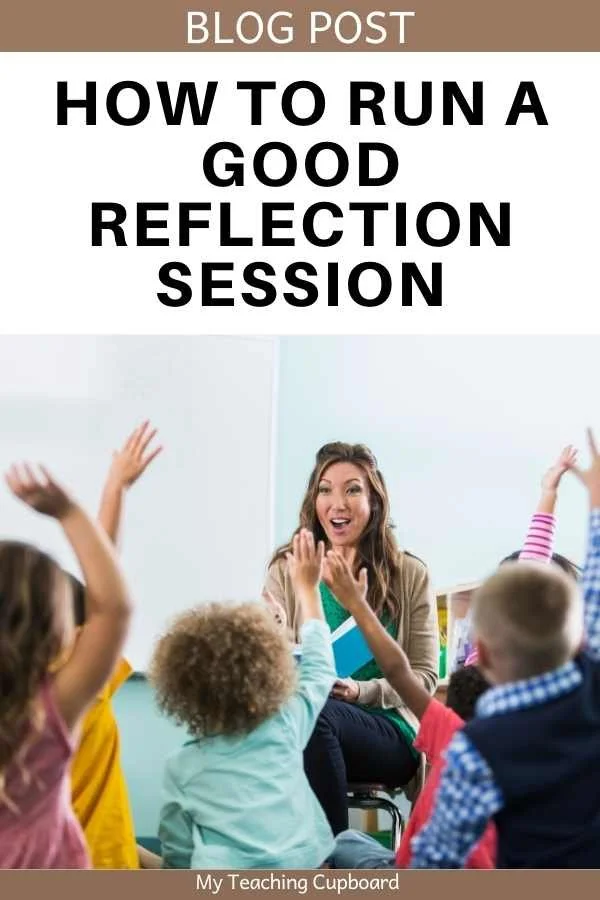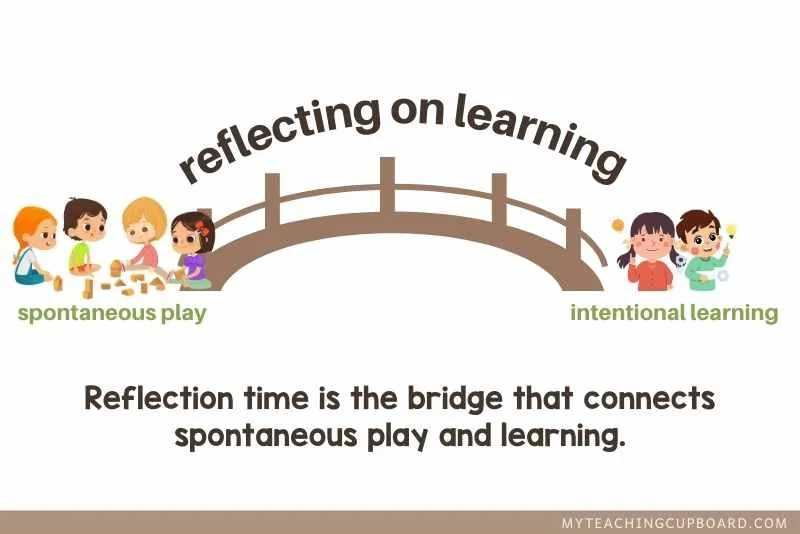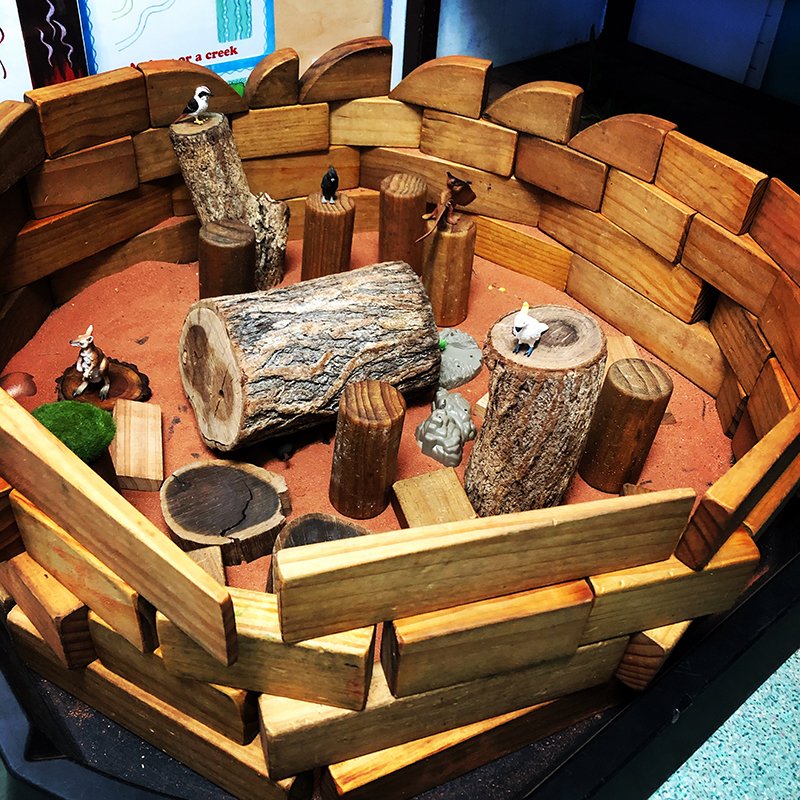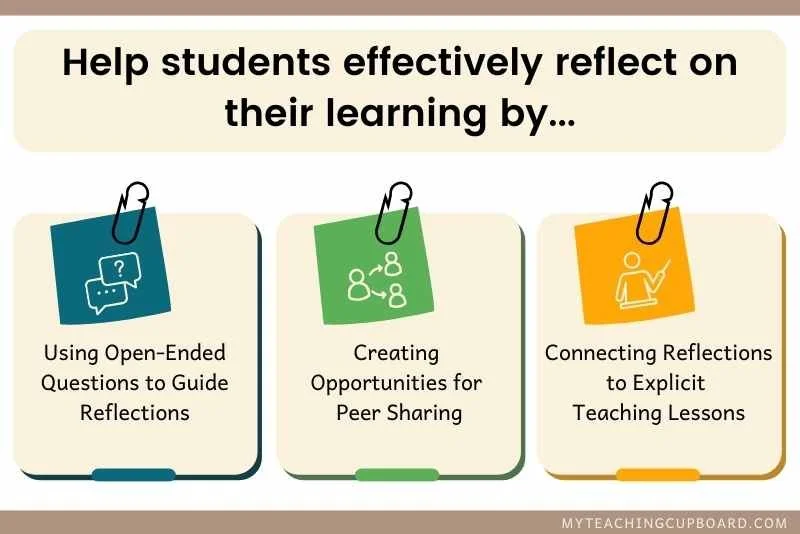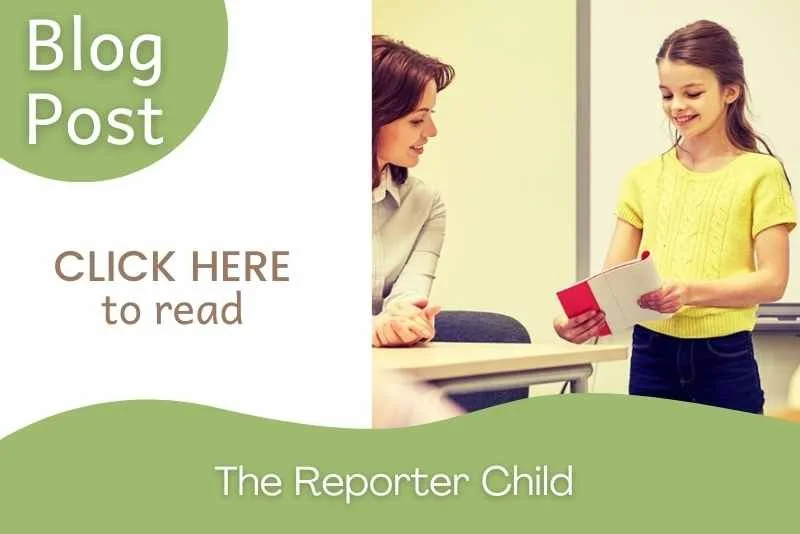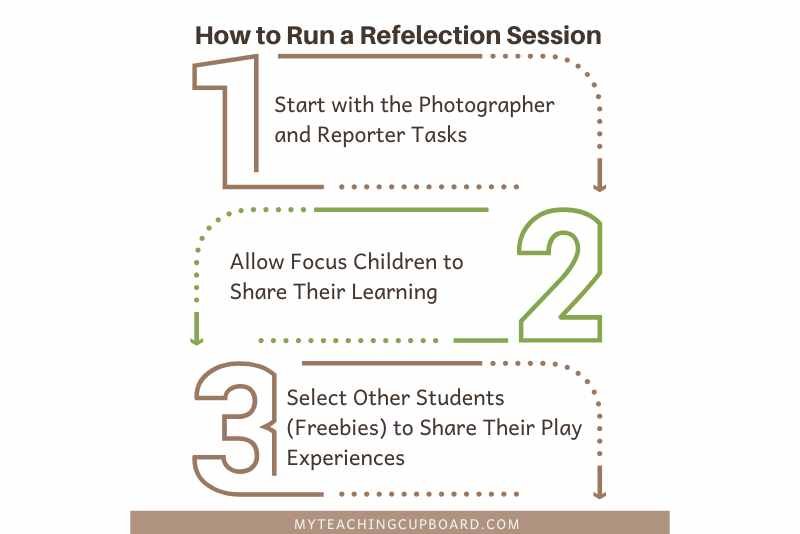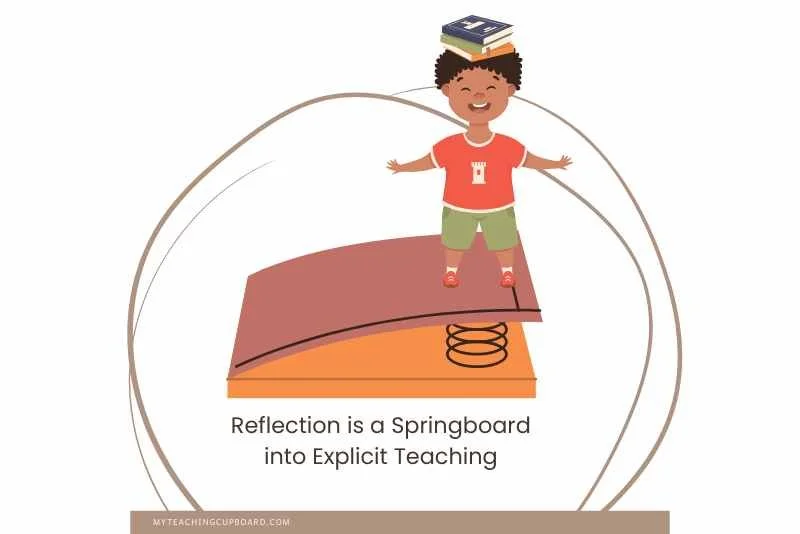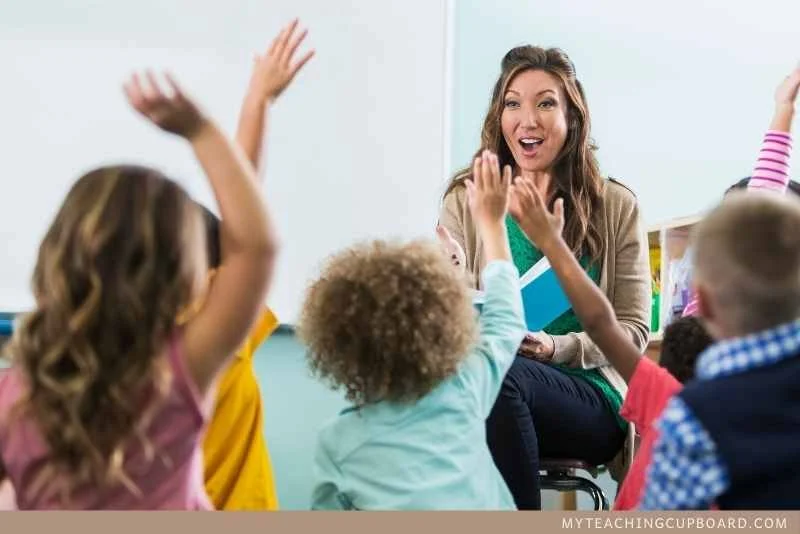Reflection Time in a Play Based Classroom: How to Run It Effectively
Discover why reflection time is a vital part of a play-based classroom. Learn how to effectively implement Walker Learning reflection strategies to connect play with curriculum and support student growth.
Want to get the most from your play based learning investigation sessions?
You need to ensure your play sessions are purposeful and tied back to your curriculum goals.
This is where reflection time comes in. It is an essential part (if not the most important part) of any effective play based pedagogy.
Reflection time is so much more than just a recap of activities.
It’s the bridge that connects spontaneous play with intentional learning. It provides a space where students can recognise the value of their discoveries, verbalise their thoughts, and build connections between what they explored during play and the formal lessons to come.
For you, it’s an invaluable opportunity to highlight key learning moments, address misconceptions, and prepare for the next steps in your teaching.
If you want a play-based pedagogy that has purpose, reflection time is non-negotiable.
It’s where the magic of play-based learning truly comes to life so never, ever skip it!
What is Reflection Time?
In a play-based classroom, reflection time serves as a crucial moment to pause and reflect on the learning that has taken place during the day’s investigations. It is far more than a simple summary or sharing session. It is a purposeful time set aside to
help students verbalise their experiences
think critically about what they have learned
and connect their play to broader curriculum goals.
As Kathy Walker from the Walker Learning Approach (WLA) explains, “Reflection time is a critical aspect of the WLA pedagogy. You can never run investigations without having a reflection time. Reflection time is not show and tell. Reflection time helps to identify the learning that has occurred during the session and most importantly is a springboard and link back into the rest of the day.”
In other words, reflection time is essential in giving purpose to play-based learning. It solidifies and builds on the experiences students have had during investigations.
Is Reflection Time the Same as Circle Time?
While reflection time might seem similar to other group sessions like circle time or show-and-tell, it serves a very different purpose.
Circle time often covers routine announcements, stories, or community-building activities. It’s about setting the tone for the day or focusing on social and emotional development.
Show-and-tell, on the other hand, typically involves students sharing personal items or experiences, which may or may not be related to learning.
Reflection time, however, is laser-focused on learning.
It’s an opportunity for students to review and discuss the skills, knowledge, and ideas they explored during their investigations.
For example, one day after a particularly engaging investigation with loose parts, I asked a couple of students to share what patterns they had created. Instead of simply showing their work as they might during show-and-tell, they had to explain the reasoning behind their designs, what they noticed about the patterns, and how these concepts connected to our math learning intentions on creating repeating patterns.
This deliberate linking of play and the curriculum objectives is what sets reflection time apart.
In my classroom, reflection time is an absolute non-negotiable. Even when we are pressed for time, I always make time to share, reflect, and identify the learning that has taken place. Even if it means cutting back a little on investigation time or heading out to first break leaving the room in a mess because we didn’t get time to re-set, I prioritise reflection time!
Reflection goes deeper than just recognising what the students have done. It’s about understanding the ‘why’ and connecting that understanding to the rest of the day’s lessons.
It really is the thread that ties playful exploration to formal academic outcomes, making it one of the most powerful tools in any play-based pedagogy.
Why is Reflecting on Learning So Important?
Reflection time is a powerful tool in the play-based classroom, offering a range of benefits that extend far beyond the immediate moment.
For young children, reflection helps them make sense of their learning experiences and gives them the opportunity to recognise their achievements and see their play as a valuable part of their educational journey.
Students Realise Play is Valuable Learning Time
Yes. Reflection time is a time that helps children recognise their play is purposeful and valuable.
When students are asked to share and discuss what they explored and learned during investigations, they begin to see the connection between their play and the larger academic concepts you’re teaching.
This validation is not only key to building their confidence as learners, but it will also help to make future play investigations purposeful and curriculum-aligned. The magic happens when your children realise that what they’re doing during play isn’t just fun—it’s important learning time!
Reflection Promotes Critical thinking, Communication, and Self-awareness
By asking open-ended questions and encouraging students to talk about their play experiences, you can help them to articulate their thoughts, consider the choices they made, and understand the consequences of those choices.
Whether they’re explaining how they built a complex structure or sharing observations about a science experiment, reflection time fosters deeper thinking. It’s during this process that children often make connections they hadn’t seen before.
Reflection Allows You to Address Misconceptions and Scaffold Learning
From a teacher’s perspective, reflection time is invaluable because it helps you address misconceptions and scaffold future learning opportunities.
As you listen to students’ reflections, you gain insights into their understanding, or lack thereof, of key concepts.
For example, I remember a child talking about a tower they made during investigations at one of our reflections. He expressed confusion about balance and stability and that gave me the perfect opportunity to correct his misconceptions (and probably other student’s misconceptions) before introducing a lesson on those very topics later that day.
Reflection time is also an opportunity to identify areas where children need further support or extension, helping you to plan your next steps effectively.
In addition, reflection time is a vital tool for documenting and extending learning. As children share their insights, you will not only develop communication skills but also have the chance to gather valuable data about each child’s progress.
These observations can be documented as part of your ongoing assessment. Reflection can provide a clear picture of how students are progressing toward curriculum goals. This documentation, in turn, informs your future planning, ensuring that your lessons are responsive to the needs of your students.
Want to learn more about how reflection fits into the broader structure of a play-based day? Check out my blog post on How to Start with Play-Based Learning.
It offers more context on the role reflection plays in connecting investigations with explicit teaching
Helping Students Reflect on Learning
Encouraging young children to reflect on their play experiences can deepen their understanding of key concepts and help them see the value in their investigations.
Here are 3 practical strategies to foster meaningful reflection in your classroom:
Use Open-Ended Questions to Guide Reflections
Asking open-ended questions during reflection time encourages students to think critically about their play experiences. Questions like, “What did you notice during play?” or “What did you learn while building that?” prompt children to articulate their thoughts, explore their decision-making processes, and consider the outcomes of their actions.
These types of questions open the door for students to make connections between their play and broader learning objectives.
You can find more guidance on using open-ended questions effectively in my blog post, Open-Ended Questions to Promote Higher-Order Thinking.
This blog post is packed with strategies to help you ask the right questions - questions that push students to think more deeply about their experiences.
2. Create Opportunities for Peer Sharing
Don’t make the mistake of thinking that reflection time is just about students communicating with you! It’s also a valuable opportunity for them to share their experiences with their peers.
When students describe their play and investigations to their classmates, they practise good communication skills because they are learning how to listen, respond, and build on each other’s ideas.
Peer sharing also fosters a sense of community in the classroom and helps students see learning as a collaborative process.
In my classroom, I always make space for peer-led discussions during reflection time. This helps students realise that their discoveries and contributions are important to others. It also creates a rich environment where children can learn from one another.
It all helps to enhance their understanding of both the subject matter and the play process itself.
Student-led discussions during reflection time are a powerful way to encourage children to take ownership of their learning. By allowing them to guide the conversation, you can promote self-awareness and independence. You’ll notice that when children explain what they did and why they did it, they start to make connections they hadn’t seen before.
For example, one day after a group of students had built a complex structure with blocks, they led a discussion about balance and weight distribution. As they described the challenges that they faced in keeping their structure upright, they began to grasp basic physics concepts without any formal lesson from me. This type of student-driven insight wouldn’t have surfaced without the reflective process.
3. Connect Reflections to Formal Lessons
I believe one of the most significant benefits of reflection time is that it provides a natural bridge between playful investigations and formal academic lessons.
During a good reflection, you will guide students to see how the skills and knowledge they explored during play connect directly to upcoming lessons in literacy, math, or science.
Here’s some examples:
If students explored patterns using loose parts, you might transition from their reflections into a math lesson on creating patterns.
If students investigated shapes during block play, you could use their reflections as a springboard into a formal lesson on 2D and 3D shapes that you had planned for a geometry lesson that day.
If students were writing at the writing table, you could use their work to introduce a planned punctuation lesson in your literacy block.
If students were playing with some toy animals at a small world setup, you could use their play scenario to illustrate the needs of living things in a later structured science lesson.
This connection between play and structured learning not only reinforces curriculum goals but also helps students understand that their play has a purpose.
It helps to build a sense of continuity between different parts of the day and it also makes the learning more cohesive and meaningful for your students.
Using these strategies in your reflection sessions will not only help your students make sense of their play experiences but also prepare them for the explicit teaching lessons coming up that day.
You can support both their academic and social development when you skilfully guide your students through the process of reflecting on their learning
How to Run a Good Reflection Session
Running an effective reflection session in a play-based classroom is an essential way to consolidate learning, connect play with formal curriculum goals, and prepare students for the next phase of the day.
Here's how I typically structure our reflection time to ensure it’s both meaningful and purposeful:
Step 1: Start with the Photographer and Reporter Tasks
In my classroom, the photographer and reporter roles play a significant part in the reflection process. These tasks, set during the tuning-in session at the start of the day, are directly tied to the curriculum outcomes we plan to address in our formal lessons.
Photographer Task: The photographer captures images related to our learning focus. For example, if we’re studying shapes in math, the photographer might take pictures of objects around the classroom that match specific geometric shapes. During reflection time, the photographer shares these photos with the class, and we discuss how they relate to our upcoming math lesson on shapes and spatial awareness.
You can learn more about the photographer child’s role and download some free resources to help you organise your classroom photographer here in this blog post: The Photographer Child
Reporter Task: The reporter’s role is to observe and document items or activities related to our inquiry. For instance, during a science unit on materials, the reporter might create a list of objects made from wood to discuss in a later science lesson on the properties of materials. This provides a perfect opportunity to link the students' investigations directly with our science objectives.
You can learn more about the reporter child’s role and download some free resources to help you organise your classroom reporter here in this blog post: Walker Learning Reporter Role
By starting with these tasks, reflection time immediately connects play to formal academic learning.
If we’re running short on time, I’ll often delay the photographer and reporter discussions until later in the day. In fact, I sometimes choose to do this even when time isn’t an issue because I’ve found that using their work as a warm-up for explicit teaching lessons is incredibly effective.
Introducing a lesson with a student’s own work builds that student’s self-esteem. You can see them bursting with pride. It also creates a sense of autonomy and significantly boosts engagement. The value of play is reinforced when students see their play experiences directly connected to a formal lesson too.
Step 2: Allow Focus Children to Share Their Learning
Next, I invite the focus children to reflect on their play experiences. These students have been observed more closely during investigations, and reflection time gives them the chance to share their discoveries with the class.
As the teacher, my role here is to highlight the key learning moments and link them to specific curriculum outcomes.
For example, if a focus child built a complex structure with blocks, I might guide them to talk about the stability of their structure and link it to our upcoming math or science lesson on balance and gravity. This step ensures that children are not only recognised for their efforts but also begin to see how their play directly ties into the broader academic concepts we are covering.
Step 3: Select Other Students (Freebies) to Share Their Play Experiences
In line with Kathy Walker's Walker Learning Approach, I also choose a few other students, known as freebies, to share their learning.
Freebie students are not the focus children. They are selected by the teacher either based on their contribution to the day’s investigations, or because they demonstrated a specific learning intention.
For example, if a child showed great teamwork at home corner, I might use this as an opportunity to highlight social skills, linking their behaviour to our social and emotional learning outcomes. Or, if a student created an unplanned pattern with loose parts, I could use that as a springboard into our math lesson on patterns.
Freebies allow for spontaneous teaching moments and provide a flexible way to introduce or reinforce both planned and unplanned learning outcomes. This approach keeps the reflection session dynamic and responsive to the needs of the classroom.
Reflection as a Springboard into Explicit Teaching
It is so important that reflection time is regarded as more than just a review of what students explored during play. It’s a critical moment for you to link play-based learning to upcoming formal explicit teaching lessons.
By reviewing and discussing their discoveries, students start making connections between what they’ve learned during play and the lessons that will follow.
For example, after a reflection on shape-building during play, I might begin our math lesson later that day by referencing the shape pictures students made during investigations that morning. This not only makes the lesson feel more relevant but also reinforces the idea that play is a valuable and integral part of their learning journey.
A Personal Anecdote: Prioritising Reflection Time, Even When Short on Time
Even on the busiest days, I never skip reflection time.
There have been countless occasions when we’ve run late to break or left the room untidy because we didn’t want to miss those precious minutes of reflection. These sessions are where the magic happens—where students realise that their play is meaningful and connected to real learning.
If time is tight, I’ve postponed photographer and reporter tasks to use them later as an introduction to explicit teaching lessons.
For example, if the photographer had captured images of shapes in the environment, I could save these for the start of our math lesson on geometry later in the day. This flexibility ensures that reflection time remains purposeful, even if adjustments need to be made.
I just can’t stress it enough! Reflection time is a vital element of any play-based classroom.
It validates the learning that has occurred.
It links play to the formal curriculum.
It prepares students for the next sessions in their school day.
Whether you're reviewing photographer tasks or using a freebie moment to highlight social skills, reflection time is the glue that holds the day’s learning together.
By making reflection time a regular part of your routine, you’re not only validating your students' learning experiences but also setting the stage for deeper critical thinking, social development, and academic growth. Whether it’s linking play to formal lessons or addressing misconceptions in the moment, reflection time plays a pivotal role in making play-based learning purposeful and intentional.
If you’re looking for ways to enhance your reflection sessions, consider using my Reporter Tasks and Photographer Tasks.
I have compiled over 200 curriculum-aligned reporter tasks in this resource. They are organised into Math, English and Science and aligned to the P to 2 Australian Curriculum.
If you are tired of trying to think up educational and purposeful photographer tasks, you’ll love this set!
There’s over 200 Photographer Tasks in this handy file. All aligned to the ACARA P-2 curriculum and organised into the following curriculum headings:
Maths—Number and Algebra, Number and Place Value, Patterns and Algebra
Maths—Measurement and Geometry, Shape, Using units of measurement, Location and Transformation
Maths—Statistics and Probability
English – Language, Literacy & Literature
Science – The Senses, Biological sciences, Chemical science, Earth and Space sciences & Physical sciences
These resources provide focused, curriculum-aligned activities that I know will engage students and help tie their play back to key academic outcomes.
By using these curriculum-aligned reporter and photographer tasks, and by following the steps outlined in this blog post, you can be sure that your reflection time is going to be purposeful, meaningful and extremely successful.

